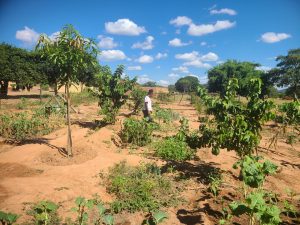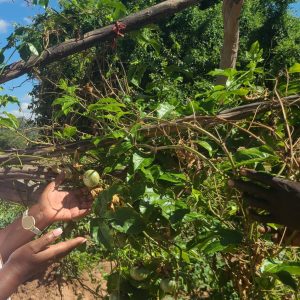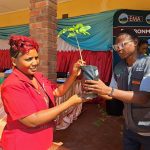Tree Planting vs. Tree Growing: A Call for Action Beyond the Shovel
Every year, countless tree planting events are held across Zimbabwe to commemorate environmental and social milestones. Photos flood social media, showcasing smiling participants with saplings in hand, celebrating the noble cause of “greening the nation.” While these events generate awareness, they often lack one critical component—aftercare. Tree planting has become a trend, but few take the next vital step: tree growing.

Mango trees and other species, visited on 01/04/2025
Tree planting refers to the act of putting seedlings into the ground, often as part of a campaign or event. Tree growing, however, goes much further. It is a long-term commitment involving nurturing those trees to maturity. It means ensuring the right conditions for growth and actively managing threats such as pests, drought, and fire. Without this sustained care, survival rates plummet, and the environmental impact of the planting effort is lost.
Despite thousands of trees planted annually, Zimbabwe still struggles to achieve a net gain in forest cover. This is because many planted trees don’t survive. True forest restoration demands more than just a spade and a photo op—it requires ongoing stewardship.
Foresters understand this well. They invest time in raising tree nurseries, preparing planting sites, and implementing aftercare routines. These include irrigation, mulching, weeding, pest control, fencing, and more—all essential practices for ensuring high survival rates and healthy growth.
A shining example of tree growing success can be found at Mukwada Secondary School in rural Marange, Mukwada Village. On a follow-up visit in April 2025 to inspect the trees planted in November 2023, the results were nothing short of inspiring. The school has achieved an 80% survival rate, with many trees now over a meter tall. Some, like granadillas, are already bearing fruit.

Granadillas fruits, 01/04/2025
But the success doesn’t stop there. The school has transformed its orchard into a thriving food forest, integrating horticultural crops like green pepper, tomatoes, leafy vegetables, onions, maize, and butternut. This not only supports food security but also creates an outdoor classroom where students learn practical agriculture and environmental stewardship.
Special appreciation goes to the dedicated teachers, students, and parents of Mukwada for becoming true custodians of this green legacy. They’ve proven that tree growing—not just planting—is the real solution to deforestation. May their story inspire many more to go beyond the shovel and nurture the future, one tree at a time.



